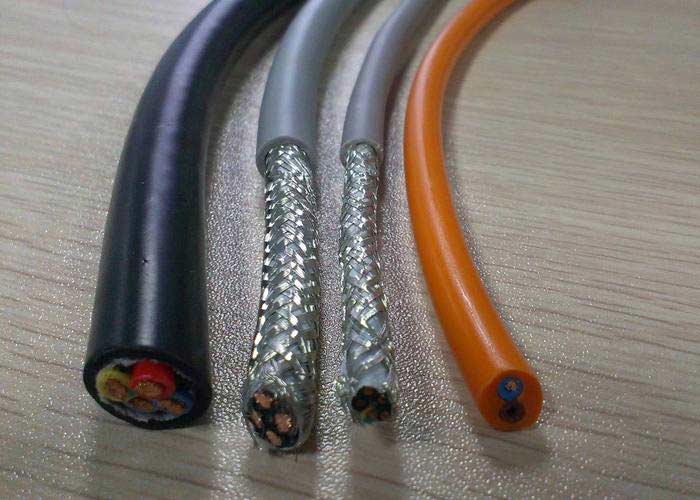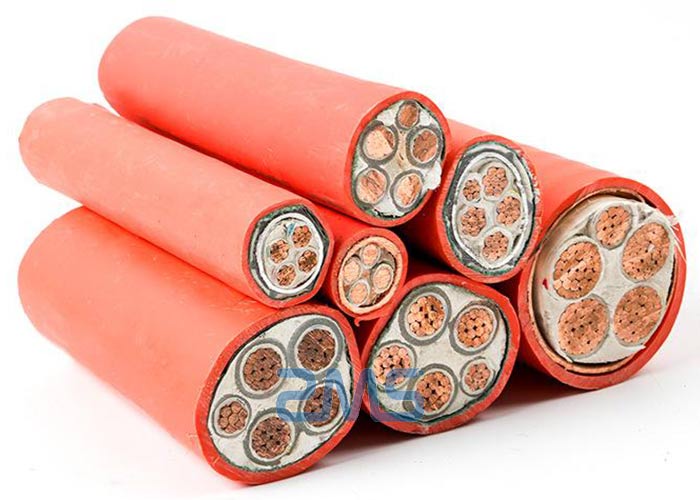The flammability of power cables, and string extension, once the fire, the danger is serious, especially in power plants and large substations, once the fire occurred, the ripple of other circuits. Therefore, the fire prevention technology of power cables is one of the important technologies for the normal operation of electrical systems.

Power cable is an important part of electrical engineering, and their role is to transmit and distribute electrical energy. Power cables are composed of insulated cores, insulation sheaths, and protective layers.
To be able to adapt to various complex laying environments, power cables are designed to have good insulation, water resistance, and mechanical properties.
However, when an overcurrent occurs in the cable circuit and causes the cable to overheat, the performance of the cable changes, followed by fire. ZMS cable provides this paper to discuss the fire prevention technology of the power cable.
1. Create a Good Operating Environment To Avoid Accelerated Aging And Damage To The Cable Insulation
Cable trench and cable tunnel to have good drainage facilities.
Such as setting up water shallow ditches, and water collection wells, that can effectively drain, if necessary, and set up automatic start and stop pumping devices to prevent water supply and keep the interior dry.
Cable trench, the longitudinal direction of the tunnel to maintain the drainage slope. Prevent water, corrosive gases or liquids, and combustible liquids or gases from entering cable trenches and cable tunnels.
A cable tunnel should be natural ventilation, take charge of the normal load of the cable so that the air temperature inside the tunnel is higher than 40 ~ 50 ℃, and can take a combination of natural exhaust and mechanical exhaust ventilation.
Ventilation system fans should be chained with the fire detector to ensure that the tunnel fire can automatically stop the wind, the cable tunnel shall not be used as a ventilation system in the airway.
Should avoid the cable fire doors in a normally closed state, with fire partitions will be completely closed cable, speaking of cable trench cover gaps filled closed and other practices that affect the cable ventilation and heat dissipation.
And the cable will be completely closed up, but also make the normal inspection of the cable becomes impossible, can not be found in time cable failure.
According to statistics, cable fires and explosions due to cable joint failures account for about 70% of the total number of cable accidents.
Must be strictly cabling joint production materials and process quality. The service life of the cable joint made is required and cannot be lower than the service life of the cable.
The rated voltage level of the cable joint and its insulation level must not be lower than the rated voltage level of the connected cable and its insulation level. The pressure resistance value between the insulation pads on both sides of the insulated joint shall not be less than two times the insulation level of the cable protection layer. The form of the cable joint assembly should be compatible with the environmental conditions set up and not affect the circulation capacity of the cable.
Within the range of 2~3m on each side of the cable joint, fireproof wrapping should be taken for fire retarding and extended burning treatment.
Generally speaking, cable permeability to the weak link of cable insulation, so strengthening the monitoring and management of the cable joint is an important part of cable fire prevention.
Terminal cable joint must not be placed in the cable trench, cable tunnel, cable channel box, or cable mezzanine within the intermediate cable joint must be registered, and the use of a variety of testing equipment for testing.
When cable joints are found to have abnormal temperature rise or smell or smoke, emergency early exit from operation to avoid the cable cast on fire in operation.
Each intermediate cable joint should ensure sufficient safety length distance between the two or more cable joints placed in the same location, cable joints with other cables should be taken between the tight sealing measures.

2. Strengthen The Preventive Test Of The Cable
After the cable and cable accessories are installed, a DC voltage test (preventive test) should be conducted. And the experimental data should be compared and analyzed. That is, you can compare with the experimental data of the same cable, and also compare with the historical experimental data of this cable to explore the law of experimental data.
If you do DC withstand voltage test, the measured leakage current value has one of the following conditions, the cable insulation may have defects, reflect the defective parts, and deal with.
(1). Rises faster with the increase of the test voltage value or the increase of the pressurization time.
(2). The value increases more compared with the same cable.
(3). Compared with the previously measured data this cable shows a clear upward trend.
(4). The leakage current imbalance coefficient between the three phases is larger.
All of the above should be carefully analyzed if the test method is not improperly caused, it is appropriate to increase the experimental voltage or extend the test time to determine whether the cable meets the conditions for continued operation.
Commonly used plastic insulation power cable DC withstand voltage test value of 4 times the rated voltage of the cable test time of 15 minutes.
3. Strengthen The Management And Operation Monitoring Of The Quality Of Cable Joint Production
4. Prevent Other Equipment From Catching Fire And Igniting The Cable
Can ignite the cable fires are oil-filled electrical equipment and coal transmission, pulverizing system, and gasoline engine system.
They must take appropriate measures: oil-filled electrical equipment near the cable trench cover to be sealed, textile equipment failure fire when the oil flow to the cable trench to ignite the cable.
Coal transmission, a pulverizing system near the cable on the accumulation of powder to be regularly cleaned to prevent coal dust from naturally igniting the cable.
Powder-making system of the storm door against the cable to have fire slot box packaging to prevent the explosion-proof door action spewing fire to ignite the cable.
5. With Sealing, Blocking, Coating, Packaging, And Other Measures To Prevent Cable Prolonged Combustion
The fireproof coating has a thin coating, does not affect the normal heat dissipation, and at the same time can play a good heat insulation flame retardant effect and other characteristics, but there are many defects.
Including the improper selection of fireproof coating varieties, the market in the actual application of counterfeit products in the use of poor results, spray spit material will surface peeling off, uneven coating thickness, and jerry-building phenomenon.
The fireproof coating used in cable engineering is mainly solvent-based, and solvent-based there are problems of solvent toxicity, price, transport safety, environmental pollution, cold resistance, water resistance, oil resistance, etc. The application effect is not ideal.
In particular, the bending resistance is not good, the coating is also poor after curing flexing, only for the fixed erection of the cable, the coating is easy to dry cracking and peel.
Therefore, it is not appropriate to use many fire-retardant coatings for cables. Instead, numerous sealing, blocking, and isolation should be used when the following issues should be noted.
(1). With the method of sealing, blocking, and partitioning, it is necessary to ensure that a single cable fire does not prolong the combustion of multiple cables.
Cable into the cable trench, cable tunnel, cable channel box, and cable mezzanine mouth too tightly fire blocking, to prevent a single cable or a small amount of cable on fire and igniting numerous cables.
Cable trench, cable tunnel every 60 ~ 100m to set up a firewall and fire doors, vertical shafts set fire partition, power cables, and control cables should be set up between the fire partition.
The control cable should be treated with full fire protection or use the flame retardant cable to ensure that the main equipment can safely stop running in any emergency.
Important cable channels should be installed with automatic alarms and automatic fire extinguishing devices, such as water spray and fine water mist fire extinguishing devices, to achieve early detection and early extinguishing.
(2). The tightness and thickness of fireproof blocking must be ensured. Fire blocking does not tightly lose the role of blocking, especially where the cable is concentrated, do a good job with soft blocking material to ensure that the blocking is tight.
Maintenance inspection should be time to restore the damaged blocking. Blocking material thickness is not enough, the cable fire will be through the blocking material string extension combustion.
The thickness of the blocking material should be proportional to the number of cable roots on the blocking surface, and the more the number of cables, the thicker the blocking. Fire doors should have automatic closing devices after a fire.
(3). Fireproof blocking layer should have the mechanical strength of the seat purchase.
Because the cable fire, especially electrical short circuit, will cause the rapid expansion of air and generate a certain impulse, damage the mechanical strength of the low fire blocking layer so that the fire blocking loses its role.
(4). Fireproof blocking materials commonly used are fireproof rock wool, asbestos sheet, asbestos rope, fireproof mastic, and more advanced high-tech materials.
The construction unit should choose suitable materials and blocking methods according to the actual situation of each project and different fire protection areas. The main parts of the blocking are the high-voltage configuration room, distribution shaft, fire control room, cable bridge, and distribution trunk line over the floor state wall.
Summary
The above is the ZMS cable team summed up the essential knowledge of power cable fire prevention. If you have more questions about wire and cable, you can contact us at any time. We will be happy to serve you.